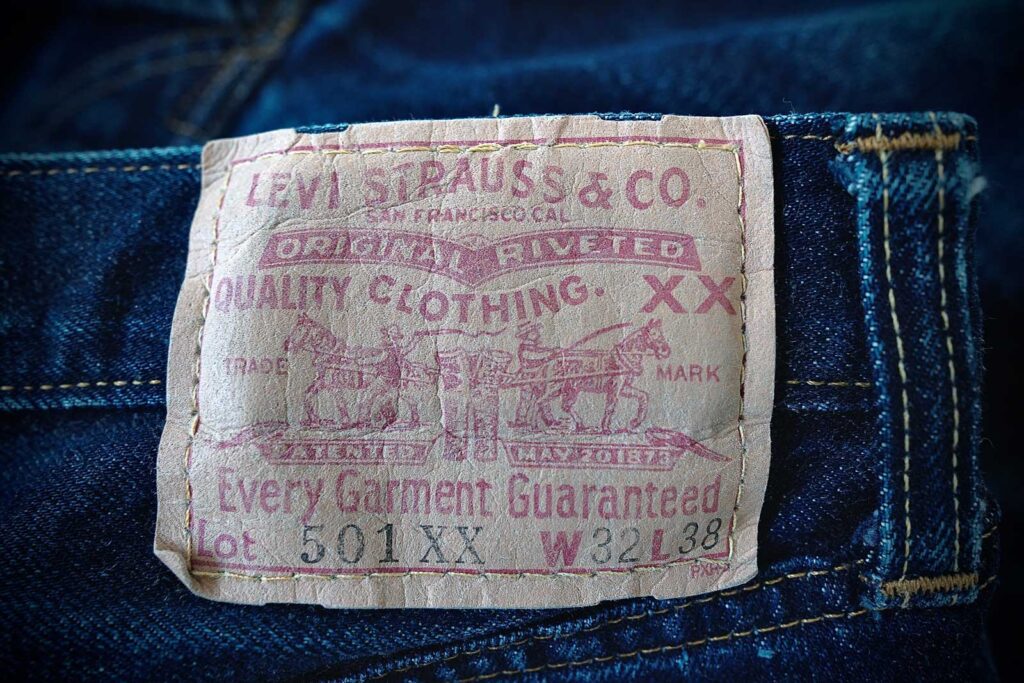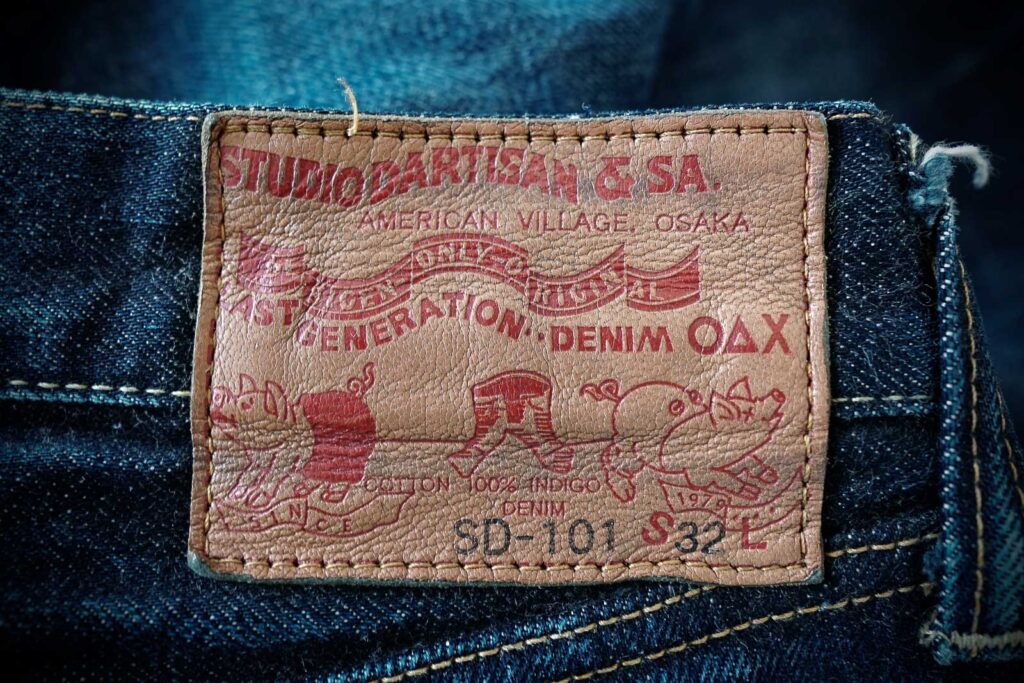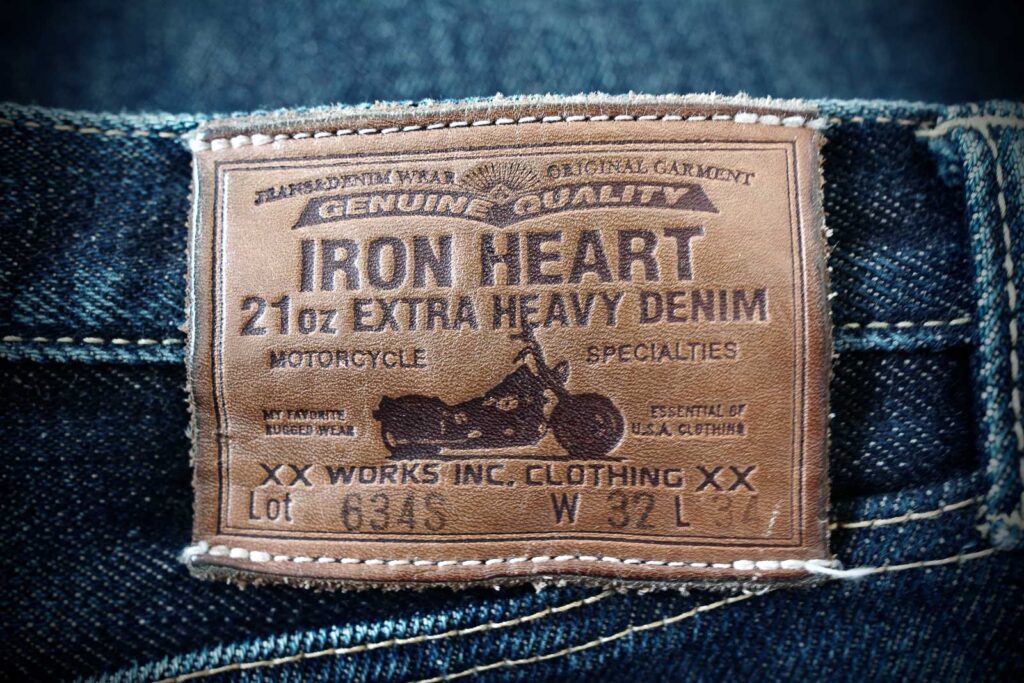The brand patch is a leather or ‘leather-like’ jacron label positioned on the waistband of jeans above the right back pocket.
The purpose of the patch was originally to inform customers of the strength of the product and to help them identify the brand.
The fact that the evolution of the jean and the accompanying branding is saturated with references to Levi’s is testament to the pivotal role the brand played at the dawn of the modern jean. The company’s desire to stand out from and dominate their market lead to innovations such as the brand patch.
The iconic Levi’s brand patch uses symbolism instead of words. The design visually depicts the durability of the product as two horses try in vain to rip apart the jeans. It symbolically shows the durability of the garment. Literally, two horses couldn’t “pull ‘em apart.”

The iconic Levi’s brand patch (here seen on a pair of Levi’s Vintage Clothing 1955 501XX jeans) 
Studio D’Artisan brand patch with two pigs pulling jeans apart 
Iron Heart brand patch 
Warehouse brand patch
The tug-of-war theme
Levi’s introduced their famous Two House leather patch in 1886. Before that, Levi’s’ patch had a written declaration of the product’s durability and originality. The graphic design not only looked better, it also help illiterate or foreign customer understand the message.
But the idea of denim garments being so tough that they can’t be ripped is, incidentally, not unique to Levi’s.
Founded in New York in 1871, Sweet-Orr’s branding features a tug-of-war on their back pocket with a pair of their jeans replacing the traditional rope. Garments with this design were being sold a whole fifteen years before Levi’s placed their patch on their jeans.
With the market for miners essentially dominated by Levi’s, their competitors Wrangler and Lee set their sights on the ranchers and cowboys of the Midwest—an industry that was rapidly growing in the early 20th Century.
Lee opted to brand their brand patch on a piece of untreated hide complete with hair with their brand, literally branded onto it.
